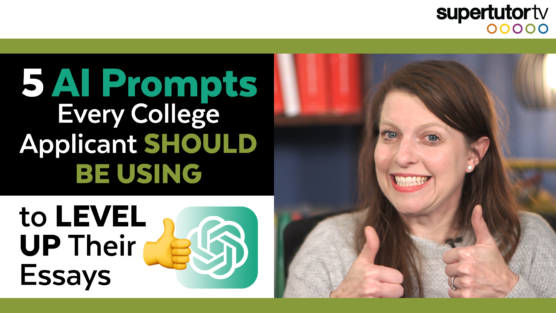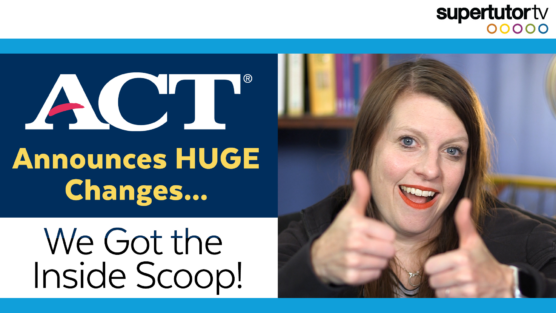Are you looking to take the digital SAT or PSAT in 2023? In this blog, we’re going to talk through how to prepare for these tests, what the best resources are, and some things you should be aware of.
Our first tip is that you should use as many real materials as possible. With the digital SAT, it becomes a little complicated because there is not as much material out there as there is for the other SAT. So, let’s go through what is available.
Official Digital SAT Prep Materials
First, there’s an app that the College Board has put out called the Bluebook app. It has practice tests inside of it, and that’s definitely the number one resource we recommend you get and use, But here’s the deal: there’s only four practice tests on there right now. And that may change later on, but at this time, there’s only four.
However, we do have a few notes on these tests. The tests in this module are adaptive, so there are actually more practice questions in these tests than there are in a two hour fourteen minute session of you practicing them. You take one section of Reading and Writing, and depending on your score, you will be sent to one of two problem sets: harder if you got a higher score, and easier if you got a lower score. There is a little bit of overlap between the two problem sets, so they are not completely distinct. But for practice reasons, if you end up getting a score anywhere between 500-640, it might be worth your while to trick the test into getting a higher or lower score than you got in order to try and get a different set of questions.
Some of you guys might also be thinking that all four of those tests are for the SAT, and you’re trying to take the PSAT and are looking for prep material for that. Well, the SAT and the PSAT are basically the same test, and they are going to become even more similar because both will have a runtime of two hours and fourteen minutes, which is different from the current paper versions of these tests.
The second resource available from the College Board is a set of practice questions that have been released for the SAT. If you open up the Bluebook app and go to “Test Preview,” there are eight reading questions and seven math questions. So, the first set of practice questions that has been released has no answer key, but Brooke has made an answer key below.
- B Melodic
- D It sets up a character description
- D It discusses the study…
- C It may seem plausible…
- D And so the years go swiftly…
- C 82%
- D falling (no punctuation)
- C Like many of…
- C 2.4
- B 4
- -32
- A Each side of fig B has a length of 6 in
- B 5
- D Zero
- 3.44 or 86/25
The other place where there are practice materials is the PDF that the College Board has released, called “The Digital SAT Sample Questions and Answer Explanations.”
The third kind of practice material that you can get for free from the College Board is on Khan Academy. On Khan Academy, they have a digital SAT prep section, but it is not super robust yet. There are only two to five practice questions per question type or item type right now, which isn’t a lot if you’re trying to intensively prepare for the SAT. But it is quite fine if you only have two weekends to prepare for the test. There are no inaccuracies with the practice material as far as we can see, but just not enough to fully grasp everything on the test.
The next resource that we want to talk about is linear SAT practice tests. Four PDFs of practice SATs have been released for people who have accommodations, and there are some new/original questions on these tests. The complaint online by some is that there is overlap between these tests and the digital Bluebook tests (about 70%), which isn’t helpful for students trying to keep the Bluebook tests “uncorrupted,” so to speak, in order to get a true reflection of your score.
Here’s the scoop: there are some official materials, but for a serious prepper, we don’t think there is enough right now to get you to where you might want to be. So, what else can you turn to?
Math & Grammar: Use Outside Material
Well, our second tip is that for math and grammar, we want you guys turning to outside materials, and when it comes to these subjects, a lot of the material on the digital SAT is pretty similar to everything we’ve ever seen on past versions of the SAT. SO, you can use old SAT materials (2016-2023) and the overlap is going to be good enough that you will get what you need. We do still recommend that you trigger what you work on based on what you missed on practice tests, so definitely use those digital SAT practice tests from the Bluebook app first. Figure out what kinds of questions you are missing on those tests, and then go and drill down the math and grammar in those areas that you need.
Vocabulary
Our third tip is to learn vocabulary. We would recommend that if you know you have a weak vocabulary, you start to work on it and try to increase your word power. We have some book recommendations, because Brooke loves learning vocabulary through books and thinks it’s refreshing and different from the normal digital exposure. For learning words, she loves going old-school and using paper flashcards and vocabulary books. Here are a few of my favorite vocabulary building books (note these are Amazon affiliate links that help support our free content):
30 Days to a More Powerful Vocabulary
Merriam Webster’s Vocabulary Builder
Vocabulary Workshop Level E (10th Grade) , Level F (11th Grade), and Level G (12th Grade)
But you can also learn vocabulary in other ways, such as spaced repetition—the idea that you go over a word once and then go over it five minutes later, then an hour later, then a day, then a week, etc as it has been shown to increase retention—using apps. We don’t have a ton of word lists right now that are particular to the digital SAT and we want to warn you that what inevitably happens when people do create word lists for the digital SAT is that they typically pull words from the four practice tests that exist. And then what happens is that if you study those lists, you will end up getting inflated scores when taking those tests, because you’re going to know the harder words that happen to appear on those exams. So, it is a little bit dangerous to use lists that are created directly from the digital SAT, because chances are they aren’t the words that are going to come up on your SAT.
You can also make your own vocabulary list. So, after you take one of the tests, feel free to go back through that test and examine each question. Figure out what words you didn’t know and which questions you missed because of words you didn’t know, and maybe write all of those down and make flashcards. It’s a good place to start, but again, you’re probably going to need more than what’s on the test. But in any case, make vocabulary a priority.
Learn Reading Question Types and How To Approach Them
Our fourth tip is to make sure you know how to approach specific reading questions. Now, this is going to be the hardest thing to do in 2023 before we have lots of prep resources out there. When it comes to prep resources, Brooke’s favorite resources tend to be from independent tutors rather than big box retailers, and whether that’s an online resource or a book isn’t as important. But we do recommend that you find some kind of digital practice material, because it will be better to practice more from the screen than a book, as that’s how you will take the test.
Starting this June or July, our online digital SAT course should be available and will cover these question types and offer practice sets using a dialogue/screen similar to how you’ll take the real Digital SAT. To find out when it drops, subscribe to our mailing list.
So far, Erica Meltzer has released her early version of her Digital SAT Reading book, (Affiliate link) but doesn’t recommend US students purchase until later this year as she’s planning to add more content. As these JUST released, I haven’t reviewed it. Meltzer is an expert on the SAT/ACT and has put out very respected work in the past, though early editions (even for Meltzer) may be prone to typos.
The last version of the SAT really relied on how well you read and understood main ideas and how well you digested complex material. And this test seems to rely on ideas such as logical reasoning. So, for example, rather than simply being about whether you can read, it’s about whether you can understand cause and effect. But there are specific kinds of reading types, and understanding things like logical reasoning, how to build an argument, the difference between claim and support, and other similar ideas is something that is going to be really important for you to excel on this test.
For right now, if you’re looking for more practice materials out there, especially on screen (the way you’ll test), one of the ways that you might be able to do this is to turn to GRE prep materials because the GRE seems more similar to the new SAT than the old SAT. But we will warn you that the GRE is a much more challenging exam than the SAT. You could even study LSAT material and look at the strategies for ideas such as logical reasoning and apply them to the SAT. Those are our tips for right now, because we don’t think the old test materials are going to give you what you need here, except on the grammar-type questions.
Practice!
Our fifth tip is kind of a general one, and that’s to practice, practice, practice. The more that you practice, the closer you are going to be to an awesome score. And we realize that for the digital SAT, because it is harder to create digital materials, you are going to have a more limited scope of where you can find those materials, but hopefully you got some ideas of where to turn to from this blog!
As an Amazon Associate I earn from qualifying purchases. This blog contains affiliate links.




